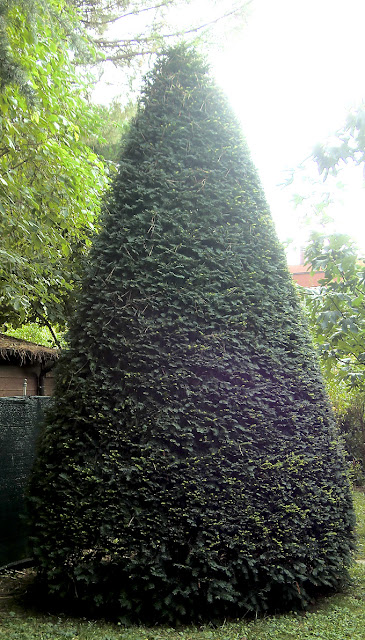family Taxaceae
common name: yew, tree of death
ETYMOLOGY: The genus name is the same with which the ancient Latin name for the plant, in turn derived from the greek taxon (arrow), due to use of arms for the construction of poisonous darts. The specific attribute Latin baccata indicates the presence of fruit like berries
rate is a conifer evergreen, spontaneous and widespread throughout the continent of Europe to the Caucasus and northern allAfrica, slow growing but can reach 15-20 feet tall. It 's a very long-lived plant specimens and if they know of about 2000 years. In Italy it is particularly parks and gardens, while in the wild is uncommon enough to be considered a protected species in some regions, mainly central and southern (populations the most notable are those of the Gargano Foresta Umbra ). can occur in a tree or shrub, with spreading habit and foliage of irregular globular shape, with very low branches. It lends itself to the formation of the Ars hedges and topiary, because highly tolerant to pruning, but can also be used as an isolated specimen. Also resistant to the atmosphere polluted cities and is not subject to severe attacks by parasites. Prefers cool, moist and shady and limestone soils. All parts of the plant are poisonous, except dell'arillo reddish covering the seeds
leaves are opposite, needle-like, flattened and slightly arched, dark green on the upper side, lighter in the lower, with the apex acute but not pungent, typically arranged in a herringbone pattern on twigs
bark, reddish-brown, initially smooth but rises with age curling and splitting into plates, while the trunk becomes thick twisted .. In the pictures we see an old specimen with a hollowed log, which has remained a vital side branch only
rate is a dioecious species, with male and female reproductive elements taken from separate plants. Those are small male cones globose, situated at the bottom of the branches, while women are isolated and at the base of the leaves. The second origin of the fruit, which is actually a aril , bell-shaped fleshy excrescence covering a single seed very poisonous, red, mucilaginous and sweet, very appreciated by birds, which do not Riec to digest the seed and expel the excrements, favoring so the spread of the plant in the area. The aril is the only part of the plant is not poisonous, while the seeds, bark and leaves contain alkaloids very harmful, especially tassina .
WARNING: In case of intoxication is not advisable to induce vomiting, but even in the absence of symptoms, leading the person to the emergency Emergency services and contact a poison control center.
MEDICINAL USE: The rate in the past was used as an antiseptic, the decoction of the berries in the bronchial, but with significant problems due to the difficulty of dosing.
Currently its main use is in cancer treatment, however, thanks to its bark taxol, a substance that has shown some activity in the treatment of certain cancers.










0 comments:
Post a Comment